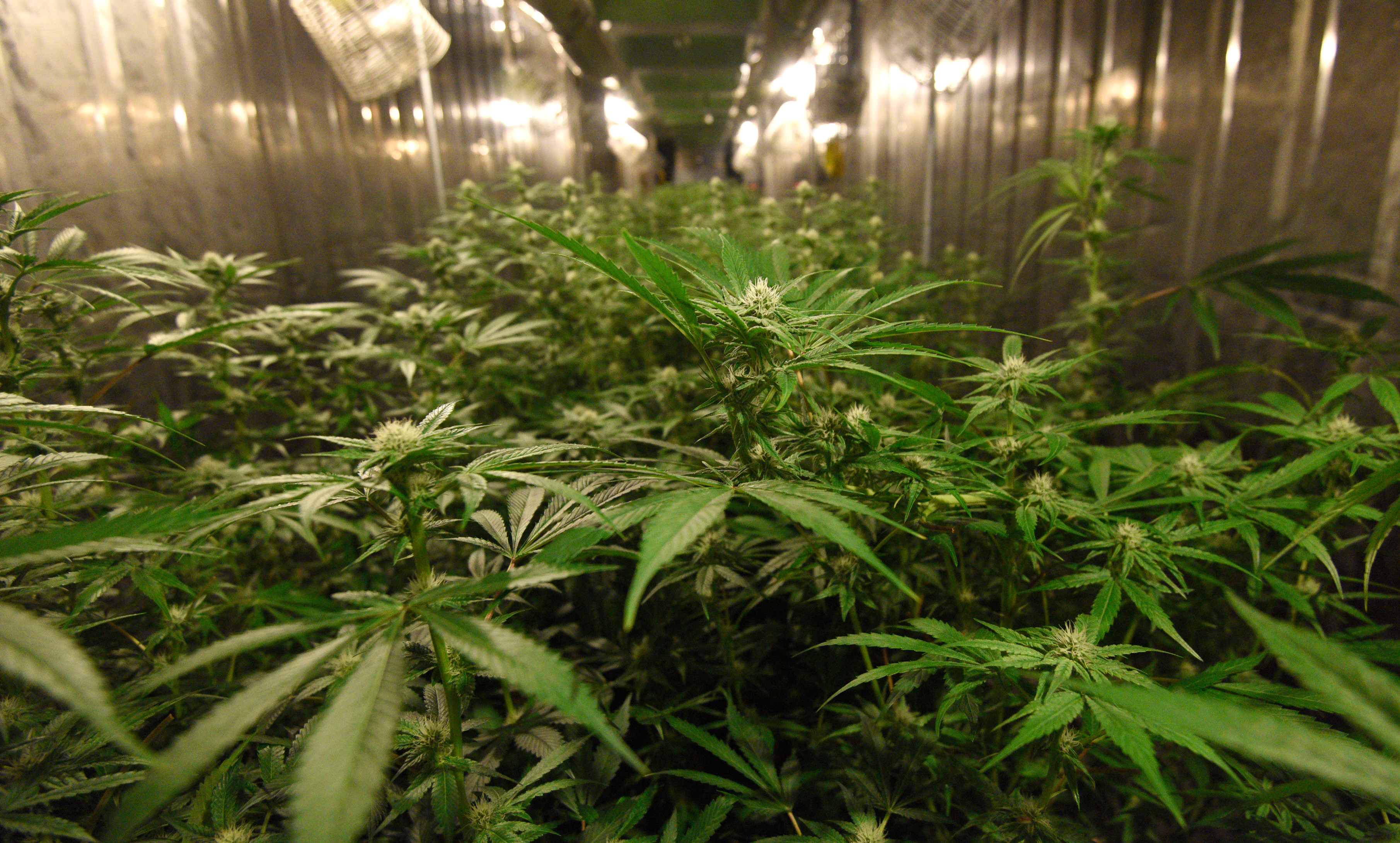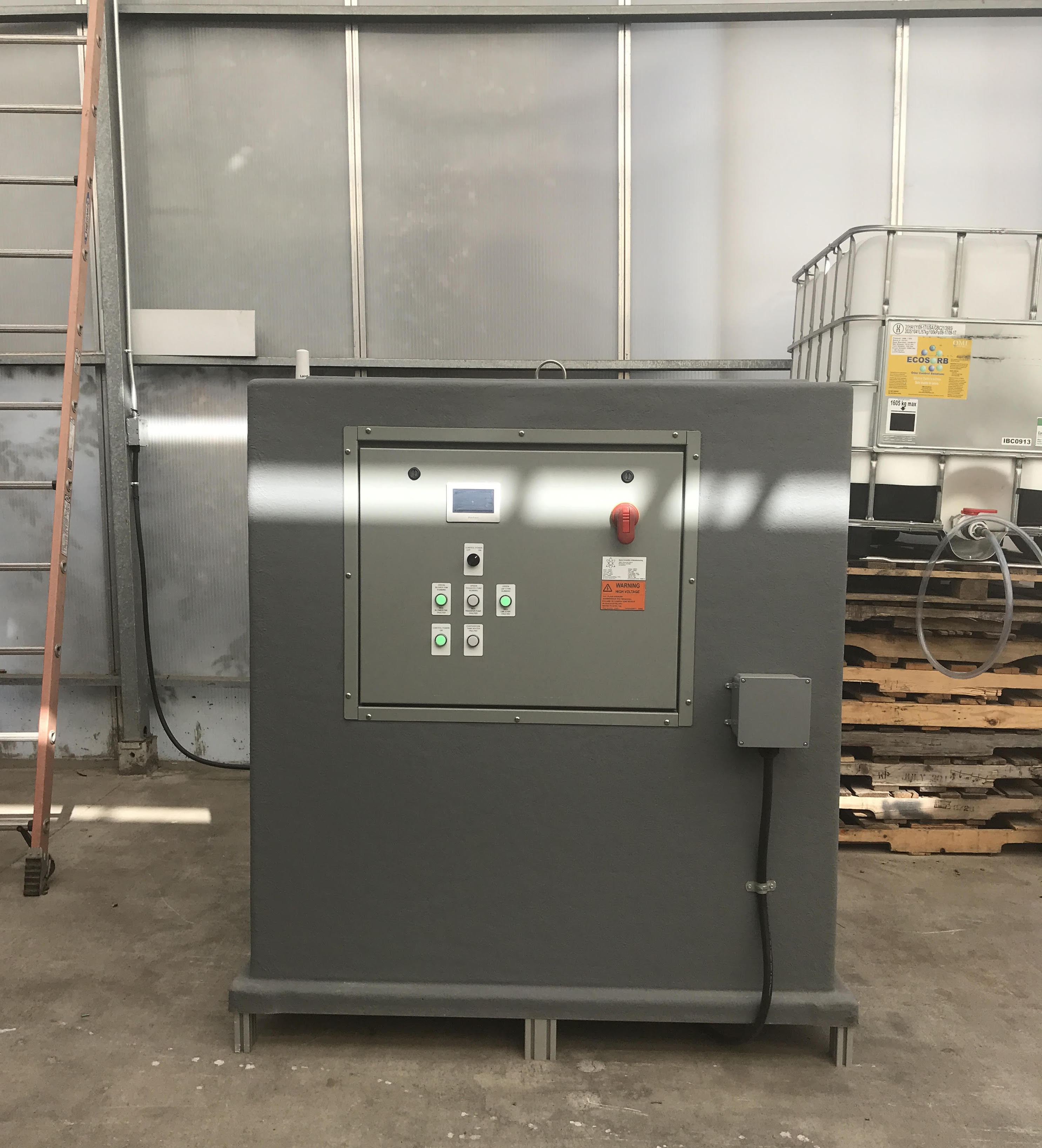Odor Neutralizers to the Rescue?
Cannabis Growers Deploy Deodorizers to Combat Complaints

Last Wednesday, County Supervisor Das Williams gathered cannabis growers and their neighbors in his living room. The Thomas Fire was roaring just miles away, and much of Carpinteria was under evacuation orders. They were there to talk pot, particularly the skunky smells.
As California prepares to allow recreational marijuana sales next year, Carpinteria has emerged as the epicenter of Central Coast pot. According to the county’s self-reported registry, 52 Carpinteria operators are growing cannabis on 200 acres.
Though the county supervisors enacted a ban on any new cannabis grows two years ago, it is common knowledge the plants have become more prevalent in the rustic beach town. In fact, hundreds of acres of emptied and dilapidated greenhouses once home to the dying cut flower industry have transformed into valuable real estate. Greenhouses are perfect for growing cannabis.
Not everyone is thrilled. Longtime residents and agriculture advocates, some who fought the development of greenhouses in the Carpinteria Valley 15 years ago, launched an opposition campaign. They used the social media website Nextdoor to gain momentum. Complaints about odor to the county’s planning department grew significantly about a year ago but have remained stagnant since.
But now, Marc Byers says he has the solution. He has come up with an apparatus that neutralizes the foul odors from cannabis flowers. The device, Waterless Vapor-Phase System, dispenses essential oils, surfactants, and reverse osmosis water that alter the chemical makeup of the problem odor molecule, Byers said.

Up close, the air conditioning–like unit filters the air the greenhouses emit. The $50,000 device, plus $50,000 ongoing annual service fees, connects to piping circling the exterior. He has installed them in landfills and sewage plants throughout the country. Byers, who is based in Indiana, has sold 15 in Carpinteria. Ten will be installed next month.
The liquid comes in 250-gallon tubs that last one to two months, according to one grower who installed the device about a month ago. “Our machines are highly unique,” Byers said, adding they run 24/7 and send text messages to users when they need to be refilled.
The cannabis growers swear the system works. On a tour of a 150,000-square-foot greenhouse, with rows of cannabis plants at different stages of life, the odor was noticeably less than it was a few months ago. Growers said the Thomas Fire forced many people to shut off the units to conserve electricity.
One grower said a neighbor asked shortly after the unit was installed, “Did you stop growing cannabis?”
But not everyone has been so positive. Another neighbor who knew the new unit had been installed complained they could still smell skunks. But the grower said he walked out to the street only to find a dead skunk sprawled across the asphalt.
Neighbors in general remain skeptical. Anna Carrillo, who has led the charge, said the smoky smells generated from the Thomas Fire make it hard to tell if the new machine is working. “I heard from a couple of people last week that there was a different odor wafting around,” she said, adding that a friend described it as “sickly sweet.”
Byers claimed the deodorization produces an odorless smell. Should the device be turned on too high it creates an aroma like a laundromat, he said.
The cannabis ordinance that the county supervisors are poised to vote on includes requirements for mechanisms to address odor. Nearly half of cannabis operators self-reported they are already using some type of commercial scrubbing device. Many growers say they had held off installing the equipment because it is fairly expensive. Others tried other air scrubbers that they said were ineffective.
Supervisor Williams finds himself in the middle of constituents who want to seriously limit cannabis in Carpinteria and the growers who argue Santa Barbara County has the opportunity to be at the forefront of an innovative industry. His word was “awesome” for the meeting of 20 growers and neighbors in his living room. “It surpassed any expectations I may have had,” he said.
As of Friday, the county had received 44 requests for letters of authorization to apply for temporary state permits to produce or sell recreational cannabis beginning January 1. Twenty-two were from Carpinteria on 14 different properties, according to county staff.
The Board of Supervisors will deliberate on cannabis matters at their first meeting of the year on January 9.


